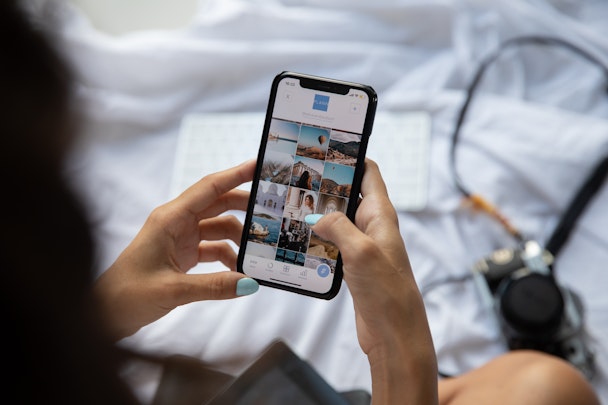Hugo Boss’ aggressive rebrand is impressive, but it misses a trick
There’s a lot to be admired about Hugo Boss’ new rebrand strategy. During January, it was revealed that the clothing brand would be undergoing a seismic digital shift, targeting Gen-Z, millennials and a digitally-wired audience. Tom Bestwick, content marketing & PR consultant at Hallam, looks at what marketers can learn from the fashion label's shift.

Hallam on what marketers can learn from Hugo Boss' recent rebrand.
“Hugo Boss has lost relevance over the past few years, and we are reclaiming our position now,” the business’ chief exec, Daniel Grieder, said in an interview with Forbes.
The ambitious and aggressive growth plan (in situ between now and 2025) will also split the Hugo Boss brand into two - Hugo and Boss - with new bolder typography and logos to boot. As part of that, Grieder has stated that Boss will be firmly aimed at millennials (25-40), and Hugo at Gen Z (under 25).
The new look was launched with the 2022 #BeYourOwnBoss and #HowDoYouHugo social media campaigns, headlined by a celebrity line-up including Future, Hailey Bieber, Kendall Jenner, Joan Smalls and Anthony Joshua (Boss), and rappers Big Matthew, SAINt JHN, and American dancer Maddie Ziegler (Hugo).
But has the brand missed a trick when it comes to builder long-term brand loyalty?
Using figures that encapsulate your values
So, who’s headlining the Boss campaign? TikTok star and influencer, Khaby Lame.
According to Grieder, Lame encapsulates the new Boss brand, personifying what it means to be a ‘Boss’ in the modern world. Lame who was a factory worker in Italy in 2020 and has reinvented himself to build the second-largest TikTok following with over 130 million followers, becoming the face of Xbox’s ‘Simply Next Gen’ campaign, along with the new Boss brand.
The collaboration is a statement of intent for the #BeYourOwnBoss campaign message: you can be anything you want to be.
From a transactional point of view (specifically referencing the aggressive growth strategy), investing in Lame and the wider celebrity line-up makes sense. They wanted to make an immediate impact, which they achieved having amassed nearly two billion impressions and 75 million engagements in a single day.
However, the reality is that for every Lame, there are millions of people around the world that don’t go from being a factory worker to the face of one of the biggest global clothing brands in two years.
Granted, the wider Boss campaign message is that any of us are capable of being a ‘Boss’ and doing great things. But Lame’s story is a special case and not a true reflection of real life that consumers in the 25-40 age bracket can tangibly relate to.
The numbers, undoubtedly, support its success. But I wonder whether they missed a trick along the way, one that would have honed in on building long-term brand loyalty.
Elevate the brand message through storytelling
Let’s start with the obvious: as a message, #BeYourOwnBoss is a stroke of genius.
It's modern, relevant to its target audience and widens the scope for opportunities. For Boss, this could be a multi-layered approach; an opportunity to combine the aspiration (Khaby Lame) with the reality (the ‘everyday boss’).
It’s a chance to combine the aggressive bottom-of-the-conversion-funnel marketing that we’re currently seeing with a long-term message and brand amplification strategy built around the very people this product and messaging is targeting.
Because the reality is the Boss brand is being sold into people doing great things every day.
The work that health workers across the world have done throughout the pandemic has been pretty boss. Those people that have set up innovative small businesses and thrived during the toughest time in recent history are pretty boss. Those people that battle adversity and come through the other side are pretty boss. So, too, are those that are doing amazing things within their community.
By telling these inspiring stories of bosses and celebrating real life, everyday success stories through owned (blog, social, email marketing) and shared (PR) activity, the brand has an opportunity to create and curate a community that consumers want to affiliate with.
Adopting a storytelling approach
You don’t have to be at the size or have the eye-popping marketing budget of a Hugo Boss to be able to make this long-term content marketing strategy work for you.
The truth is that most B2C businesses can adopt such a strategy. You just need to answer one simple question: why do your customers choose or need you?
Sure, you might not be able to afford Khaby Lame to boost your search traffic by billions and see instant success with your conversions. But if you have a product consumers want, a campaign message or value that is relevant and can be bought into, and (most importantly) a customer that is willing to share their experiences and be affiliated with your business, you’ve struck gold.
Content by The Drum Network member:

Hallam
We’re a multi-award winning full-service digital agency based in the UK, and a trusted partner to some of the world’s biggest national and international brands.
Putting...

